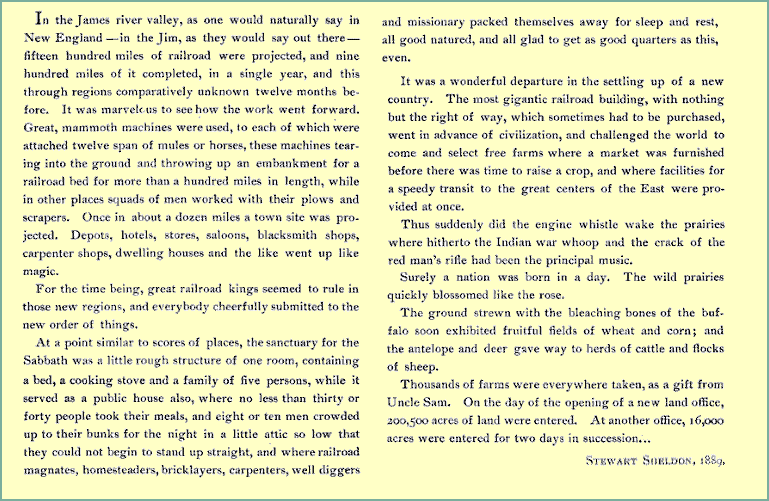Home Missionary Society

The American Home Missionary Society was formed in New York city in 1826, to raise money so that churches and Sunday schools could be started where there were none in the west. The missionaries were “to follow the American emigrant, in all his migrations, and to plant the permanent institutions of the Christian faith wherever he builds his cabin.” It was also said that “the future of the West depends on the Home Missionary, and the future of our country depends upon the West.”
A group of small missionary societies, the earliest of which was the Young Men’s Missionary Society of New York (formed in 1815) along with the New York Evangelical Missionary Society (formed in 1816) and other small agencies combined to make up the United Domestic Missionary Society in 1822. This group was supported by Reformed Churches and the Presbyterian Church. In May 1826, representatives from Congregational, Presbyterian, and Reformed churches met to form the American Missionary Society. During the convention, the United Domestic Missionary Society voted to merge with the American Home Missionary Society. It was an auxiliary of this Society that Laura Ingalls Wilder refers to in the Little House books.
The purpose of the American Home Missionary Society was to assist congregations in the United States and its territories primarily until they could become financially self-supporting. Women’s groups within the society were recognized with a Women’s Department formed in 1883. Operations of the Society were carried out through auxiliary societies, agents and agencies. In the 1890s the Society membership increased from 17 to 203. However, by 1893, the interdenominational character of the Society had been lost and it was renamed Congregational Home Missionary Society, which was still in existence in 1975. [Information from Wheaton College Archives, Wheaton, Illinois]

Reverend “Scotty” Stuart and Reverend Edwin Alden, Home Missionaries.
Both Reverend Alden and Reverend Stuart of the Little House books were home missionaries. Laura’s fictional young “Rev. Stuart” of By the Shores of Silver Lake (see Chapter 23, “On the Pilgrim Way”) has always been suspected to be the Reverend Stewart Sheldon, who would have been 56 years old at the time of Rev. Alden’s sermon, so not the “big boy” Wilder remembered. As there is no record of the names of all 25 persons who were said to be at the first service held in the Surveyors’ House, it’s possible there was a young missionary in the group and Wilder remembered details incorrectly. Sheldon’s appointment as territorial superintendent of the Dakota Home Missionary Society came directly from the American Home Missionary Society. Rev. Sheldon served from June 20, 1874, to June 20, 1886, although he had been in Dakota Territory since 1869; Rev. Stewart Sheldon served as a missionary pastor for four years previous to his commission as general worker. In his sixteen years of pioneer service he saw the Congregational churches of Dakota Territory increase in number from one church with a membership of ten, to one hundred and one churches with a membership of 3,571, and a Sunday school membership of 5,641.
…from my old blog (July 28, 2007), some memories of Rev. Sheldon’s from his days as a missionary in Dakota Territory:


Home Missionary Society (SSL 23), see also Rev. Stewart Sheldon, Rev. Edwin Alden, missionary barrel, The Advance

